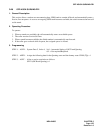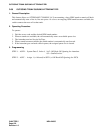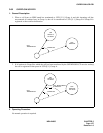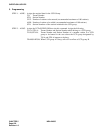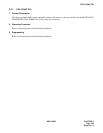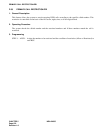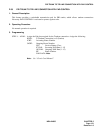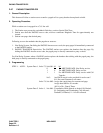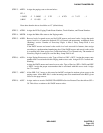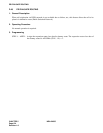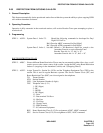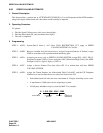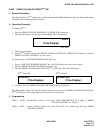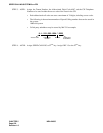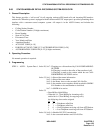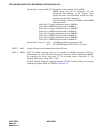
NDA-24305 CHAPTER 5
Page 133
Revision 1.0
PAGING TRANSFER-PRI
STEP 2: ARTD - Assign the paging route as shown below:
STEP 3: ATRK - Assign the LENs, Paging Trunk Route Number, Trunk Number, and Tenant Number.
STEP 4: MBTK - Assign the Make Idle status to the Paging trunks.
STEP 5: ANPD - Reserve levels for trunk access and for PAGE answer and cancel codes. Assign the trunk
access level for a Connection Indexed (CI) of Normal and momentary switchhook flash
(Hooking) service. Number of Necessary Digits is Max.3. Busy Lamp Field is not
activated.
If the PAGE answer and cancel codes reside in a level reserved for features, then assign
according to a predetermined numbering plan. If the PAGE answer and cancel codes reside
in a separate level, then assign for a Connection Index (CI) of Normal only. The number of
Necessary Digits is usually two and the Busy Lamp Field is off.
STEP 6: ASPA - Assign Paging Route access code. Type of Service, SRV = OGC. Assign the proper route
number that is associated with this Paging trunk access code. Assign for CI = normal and
Hooking.
Assign the PAGE answer and cancel access code. Type of Service, SRV = PAGA and SRV
= PAGC. Assign the proper route number that is associated with this access code. Assign
for CI = normal.
STEP 7: ARSC - Allow RRI: 2 & 3 access to this route for the RSCs assigned to stations given access to the
paging routes. Allow RRI: 0 & 1 on the incoming route to be transferred to the RSCs given
access to the page answer.
STEP 8: ASFC - Assign station to receive PAGING TRANSFER a Service Feature Class that allows SFI =
38. This allows a station to dial PAGE answer codes.
RT : 1
1-OSGS : 2 2-ONSG : 3 5-TF : 1 6-TCL : 8 7-L/T : 1
8-RLP : 2 15-LSG : 0
Data other than the above should be set “0” (default data).



